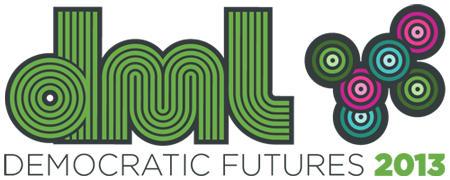DML: Broadening Participation in the Maker Community
The Maker movement and the broader Do-It-Yourself (DIY) culture celebrates innovation, creativity, and community engagement experienced through the open-ended processes of making. Within the Maker movement, there exists a wide array of genres of Making, ranging from cooking to sewing to woodcrafts and robotics. However, public gatherings of the Maker movement (such as Maker Faires) often attract a more homogeneous audience than the population at large. This session examines strategies for broadening participation in the Maker Community, exploring technologies and activities that are explicitly designed to engage more diverse audiences in Making.
The panel explores the question of broadening participation in the Maker and DIY communities by looking closely at three specific examples — Squishy Circuits, e-Textiles, and Scratch:
AnnMarie Thomas describes the ideas and motivations underlying her Squishy Circuits project. The goal of the project was to design tools and activities that provide more intuitive and playful ways for kids of all ages to create circuits and explore electronics — in particular, through the use of play dough. This approach has allowed even young children to engage in learning about circuits by grounding making in materials that are well-aligned to children’s play.
Kylie Peppler highlights a complementary approach to learning about circuits and computation through electronic textiles (or e-textiles). E-textiles are articles of clothing, home furnishings, or architectures that include embedded computational and electronic elements. They also serve to illustrate that electronics can be soft, colorful, approachable, and beautiful. This work serves as a compelling example of how new materials can be a disrupter of the oblique gender representations in electronics, sparking perhaps the first ever female-dominated electronics hobbyist community around e-textiles.
Mitchel Resnick discusses his research group’s work on the Scratch programming environment and online community. With Scratch, young people can program their own interactive stories, animations, games, music, and art — then share their creations with one another online. In the process, young people learn important mathematical and computational ideas, while also learning to think creatively, reason systematically, and work collaboratively. Scratch is designed to make the activity of programming more tinkerable, more meaningful, and more social — and thus appeal to broader, more diverse audiences than traditional programming languages. Scratch builds on youth interests in popular culture, social media, and expressive communication.
Across these presentations, we reflect on the relationships between technology, materials, and culture to articulate new strategies for broadening participation in the Maker community at large. Discussant Elyse Eidman-Aadahl will draw on lessons learned from her experiences in the National Writing Project.
Interwoven with the presentations, we will engage the audience in discussing issues around broadening participation in the Maker community. Audience members will have the opportunity to break into small groups to discuss their experiences with broadening participation, integrated with question-and-answer interactions with panelists.



